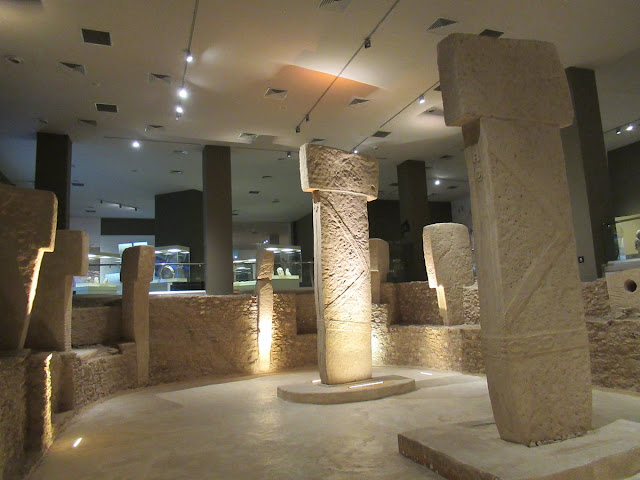Şanlıurfa Museum, Turkey
The
Sanliurfa Museum is home to some of the essential items in human history.
Excavations in Sanliurfa proved the archaeological theory that civilisation
produced religion. Religion was the catalyst for society more than 12,000 years
ago, as revealed by Gobeklitepe's excavations. Archaeology only partially
understands the motive of the Neolithic civilisations that constructed
Gobeklitepe without the necessary tools. Archaeologists are searching for a
more heavenly force that led humans to build five-meter towers around a
specific location so that they might perform rituals there. Today, the Museum
displays clay pieces, flintstones, and the remains of persons who contributed
to building the world's earliest temple. Along with the Gobeklitepe replica,
other sights include the Urfa Man statue and trade development in Upper
Mesopotamia because of the Euphrates and Tigris rivers.
You must
have a reason to apply for a turkey
visa online now. Visit our website and apply for a turkey e-visa
online.
Where
is Şanlıurfa Museum?
The
Sanliurfa Museum was a tiny structure not far from the ancient town. Many
mosaics, antiques, and statues from ancient Edessa were discovered during the
renovation of the Holy Pool of Prophet Abraham's nearby surroundings. Notably
among them, Urfa Man is a unique discovery. In the meantime, Gobeklitepe's
excavations were expanding, and the Ministry of Culture and Tourism needed a
larger space to display all these significant artefacts. An archaeological park
was constructed using the ancient town's adjacent livestock market. Roman
mosaics were discovered during restoration work a few metres below the surface;
a massive roof now preserves them in their original location, which is the
extension of the Sanliurfa Museum. The mosaics beneath the dome next to the
Museum are also accessible with the same ticket. The Museum includes a large
parking lot, which makes visiting the Holy Pool of Prophet Abraham and the old
town much more accessible than in Sanliurfa. The provinces of Gaziantep,
Mardin, and Adiyaman, the other major tourist destinations on a trip in the
southeast of the Republic of Turkey, are all located two hours from Sanliurfa.
Sanliurfa Museum is only 40 kilometres from the Gap airport in that city. Since
GAP airport is situated in the centre of the fertile crescent's most well-known
tourist spots, it is convenient to begin your trip to Turkey's Mesopotamia.
What
to see in Sanliurfa Museum?
The
Sanliurfa Museum is home to artefacts from several civilisations that once
dominated the region, including the Romans, Seljuks, and Ottomans. The Urfa Man
statue is the Sanliurfa Museum's most significant artefact. As you can almost
sense the original height of the pillars of Gobeklitepe, the replica of the
structure is impressive in and of itself. Before Gobeklitepe was built,
individuals experimented with carving limestone, as seen on the path leading to
the hall. Exhibition halls showcasing the kick wheel, glassblowing, first
farmers, and river traders are pretty educational. A crucial component of the
Sanliurfa Museum is the stele of Nabonidus. In 539 BCE, Cyrus the Great deposed
him as the last king of Babylon. His stele, which shows Nabonidus worshipping
the sun and moon gods of Mesopotamia, Ishat and Sin, was discovered in Harran.
According to the stele, Sin granted Nabonidus the go-ahead to repair several
temples in Harran and other Mesopotamian cities. His inscription next to the
artefacts from the first temple in the world is a lovely coincidence, given
that he is regarded as the world's first archaeologist. Last but not least, the
Museum's stunning wood and stone carvings depicting the Turkish communities can
be seen before you leave. It would help if you headed to the mosaics hall to
the right after leaving the Museum.
What
is the importance of Urfa Man Statue?
During the
Sanliurfa Balikligol excavations, the Urfa Man statue was discovered. The local
name for the Holy Pool of Prophet Abraham, Balikligol, is Fish Lake. The
statue's age is unimportant compared to its significance. It is the oldest
life-size realistic sculpture of a human ever discovered. The statue was
constructed about the same time as other ancient structures, including
Gobeklitepe and Nevali Cori. Nearly two metres tall, the statue has obsidian
stones set into its eye sockets by the artist. Older statues can be discovered
worldwide, but they need to be sculpted in the likeness of the typical man of
the time. I hope archaeologists will soon learn more about the Urfa Man statue,
Gobeklitepe, and Nevali Cori.
Apply for
a turkey
visa online, pack your bags and book a flight is all necessary to begin
a fantastic vacation.






Comments
Post a Comment